#culture relic
Text
[Hanfu · 漢服]China's national Important Cultural Relics Impression Series By Artist @陆曼陀
China Neolithic Period:The Hongshan culture(4700-2900 BC)Relics<玉猪龙/Pig dragon>
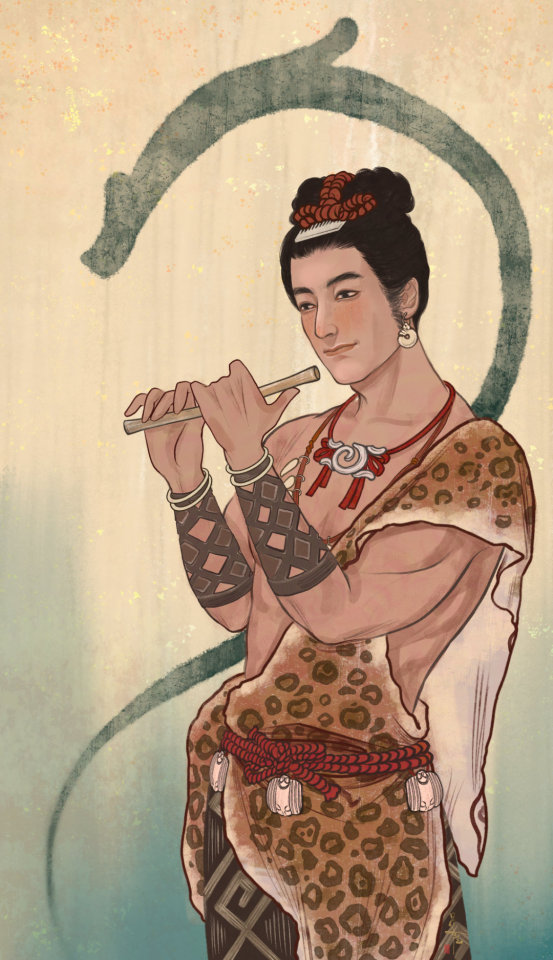

China Shang dynasty / Western Zhou dynasty(1200–800 BC) · Shu state Relics < 太阳神鸟金饰/Golden Sun Bird>

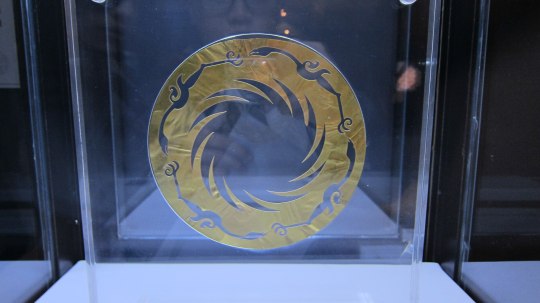
China Western Han Dynasty (202 BC – 9 AD)Artifact Relics<长信宫灯/oil lamp in the shape of a kneeling female servant>


After the lamp is lit, the soot enters the base of the palace lantern through the sleeve to achieve the purpose of cleaning the air.

China Eastern Han Dynasty(25–220 AD)Artifact Relics<铜奔马 or the Galloping Horse Treading on a Flying Swallow (馬踏飛燕)>


China Eastern Han Dynasty(25–220 AD) Artifact Relics<摇钱树/Money tree (myth)>

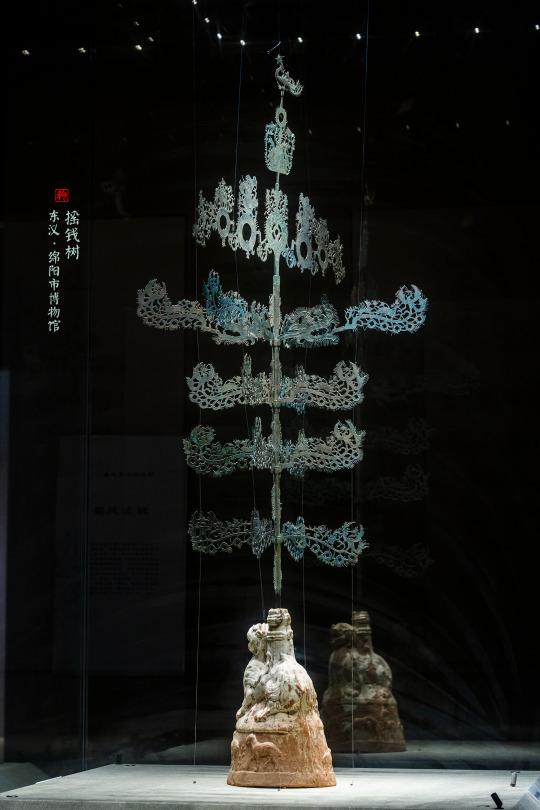
China Tang Dynasty(618–907CE) Artifact Relics<女立俑/Female standing figurine >
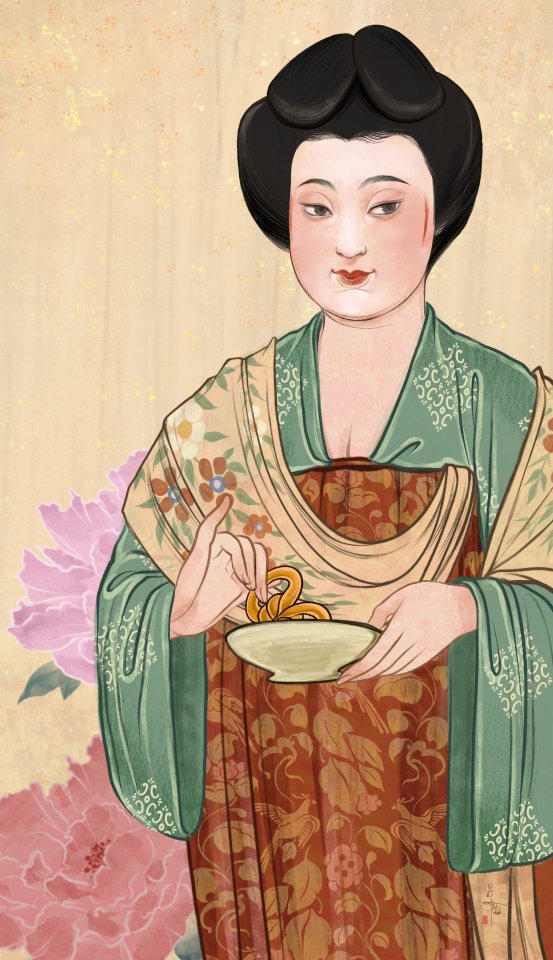
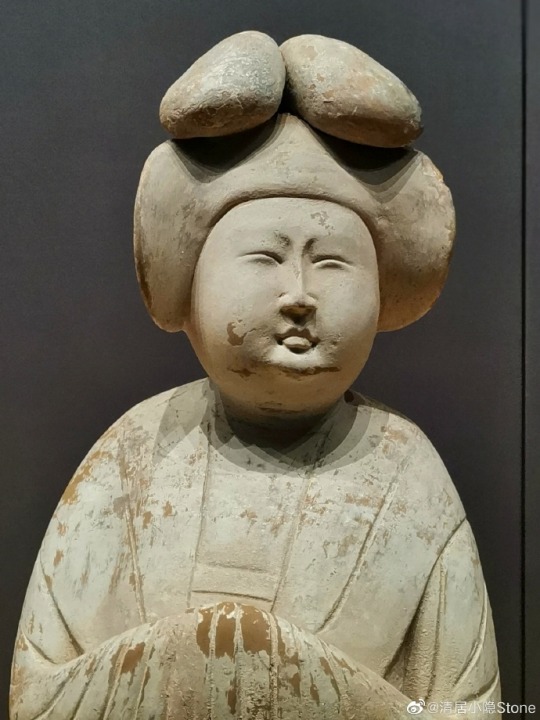
China Song Dynasty (960–1279) Artifact Relics<汝窑天蓝釉刻花鹅颈瓶/Ru kiln sky blue glaze carved gooseneck bottle>
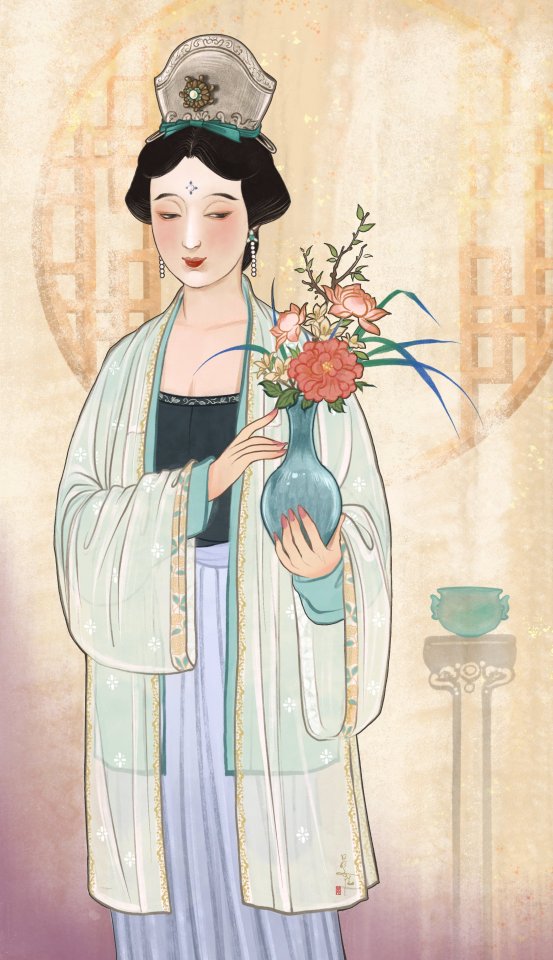

China Song Dynasty (960–1279) Painting<千里江山图/A Thousand Li of Rivers and Mountains>by 王希孟(Wang Ximeng)



China Yuan dynasty (1279–1368) Artifact Relics<霁蓝釉白龙纹梅瓶/Ji blue-glazed plum vase with white dragon pattern>

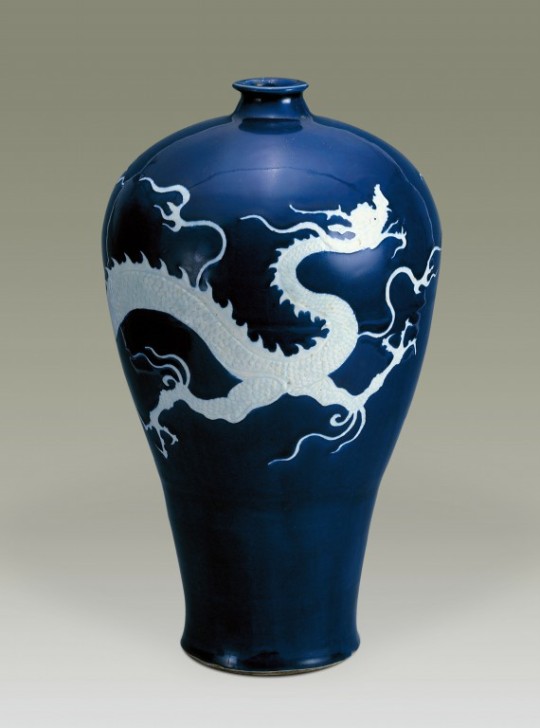
【Artist:陆曼陀 Social Media】
————————
Twitter:https://twitter.com/LuDanling
Weibo:https://weibo.com/u/2846691957
Post Source:https://weibo.com/2846691957/NzQ9IyzKL
————————
#chinese hanfu#陆曼陀#China history#chinese art#hanfu illustration#hanfu accessories#hanfu#hanfu history#china#chinese#history#chinese aesthetics#culture relic#汉服#漢服#heritage#civilization
427 notes
·
View notes
Text

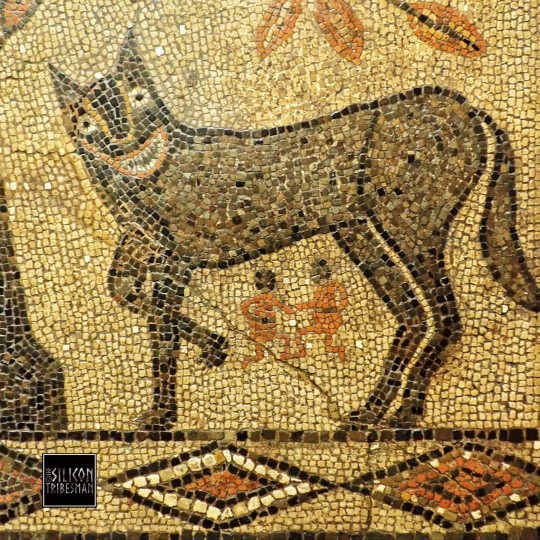

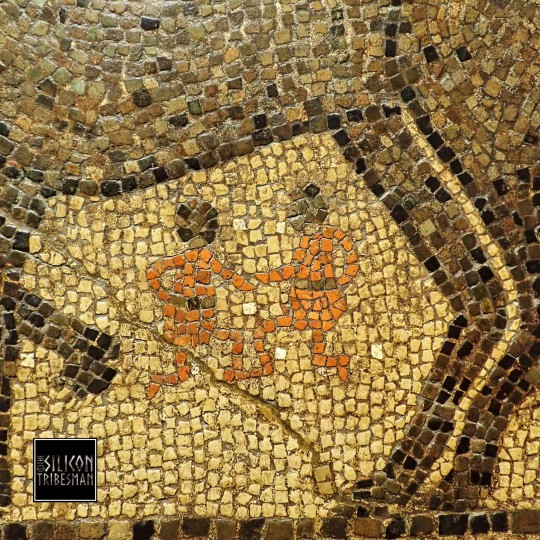
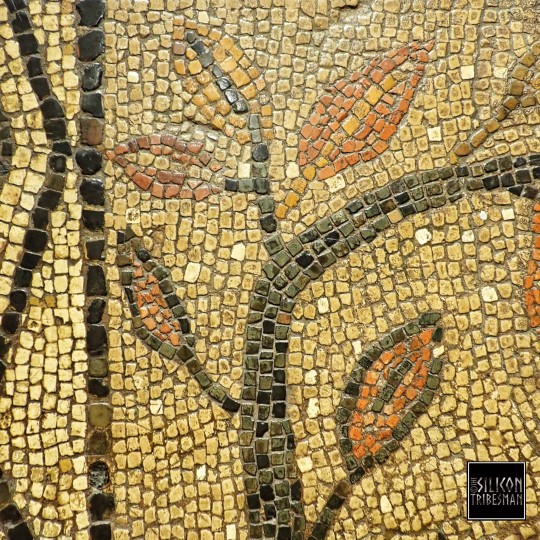
The Wolf and Romulus and Remus Mosaic, Roman Aldborough, North Yorkshire, 300-400CE, Leeds City Museum.
This panel formed the centrepiece of a large mosaic floor constructed in the Roman town of Isurium Brigantum, now Aldborough in North Yorkshire. The mosaic depicts the legend of Romulus and Remus. They were abandoned in the River Tiber but washed ashore where they were fed by a she-wolf.
#romulus and remus#she wolf#roman#roman myth#romans#roman culture#roman villa#roman mosaic#roman craft#roman britain#ancient living#ancient craft#ancient cultures#relic#archaeology#artefact#roman empire#mythology#roman living
800 notes
·
View notes
Text

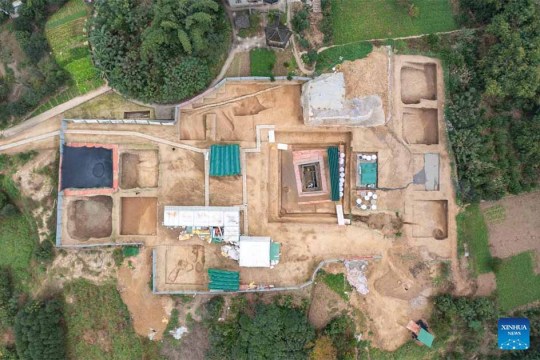
A Rare Western Han Dynasty Tomb Found in Southwest China
A well-preserved tomb, dating back to the Western Han Dynasty (202 BC-25 AD), with a clear recorded year has been discovered in Wulong District of southwest China's Chongqing Municipality, the Chongqing Cultural Relics and Archaeology Research Institute said Tuesday.
This archaeological project is a rescue excavation and protection work carried out to forge cooperation with the Baima project, the last of a cascade of hydropower stations on the section of the Wujiang River in Chongqing.
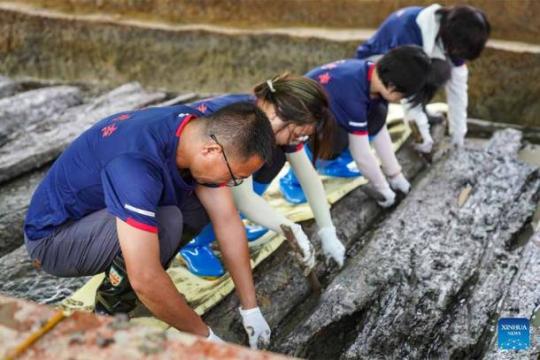

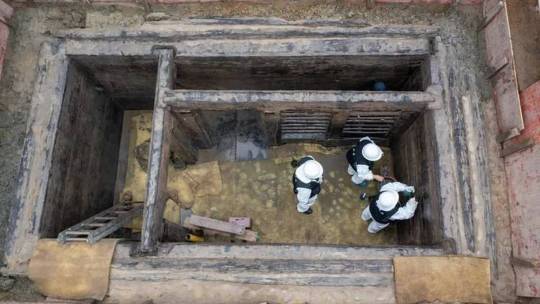

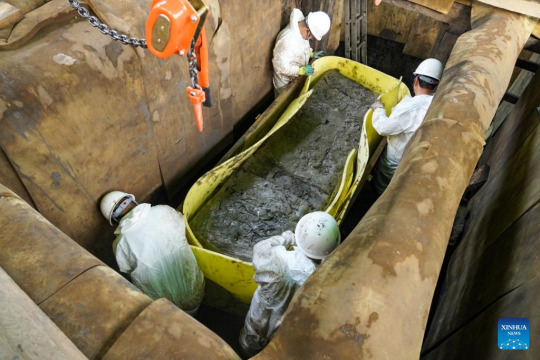

With the approval of the National Cultural Heritage Administration, the Chongqing Cultural Relics and Archaeology Research Institute set up a work team of more than 20 people from different archaeology research institutes and universities to excavate the site in March this year.
According to Huang Wei, the leader of the archaeological project, a collection of tombs dating from the Han Dynasty (202 BC-220 AD) to the Six Dynasties period (222-589) were newly discovered as part of this project. Among them, the tomb dating back to the Western Han Dynasty was the most important, and more than 600 precious cultural relics such as lacquerware, wood ware, bamboo ware, pottery and bronze ware were unearthed from the tomb.

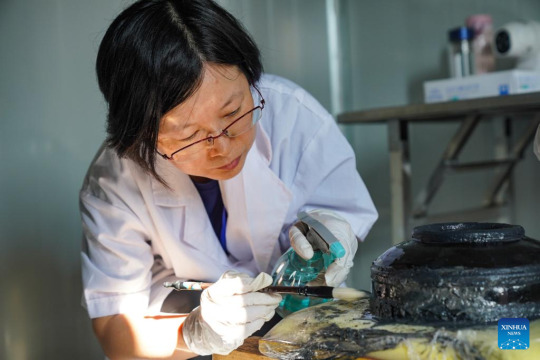
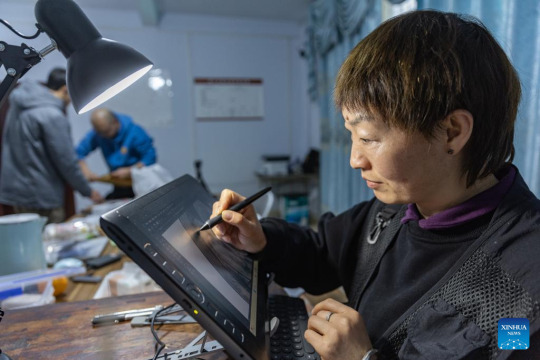
Due to the tomb being filled with water throughout the year, it remains undisturbed and unharmed, and the funerary objects in the tomb are well preserved.
"What is exciting about this discovery is not just the large number of unearthed artifacts but also the list of burial items containing a precise year record, which has been verified as 193 BC, providing clarity on the tomb's burial timeframe. An unearthed jade ware from the tomb shows the prominent position of the tomb owner," Huang said.
The list of burial items found in the tomb is complete and clearly records the name, quantity and size of the funerary objects.
The tomb discovered this time is the one containing the largest quantity of lacquered wood and bamboo wares ever found at one time in the upper reaches of the Yangtze River in China, said Bai Jiujiang, head of the Chongqing Cultural Relics and Archaeology Research Institute.

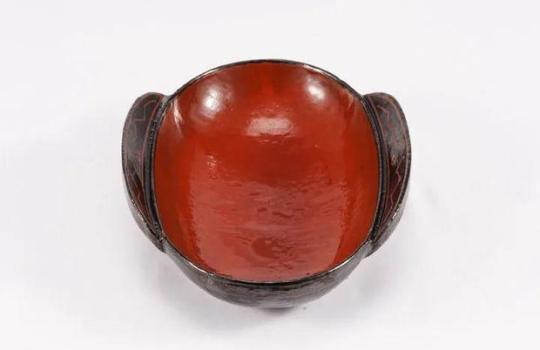

Based on publicly available information, it is also the earliest tomb of the Western Han Dynasty found in China, with a clear recorded year, according to Bai.
This is a major archaeological discovery regarding the Qin and Han Dynasties in the Wujiang River Basin, offering physical evidence and important basic research materials for future study of burial customs and the comparative analysis of famous artifacts from the early Western Han Dynasty, according to the archaeologists.
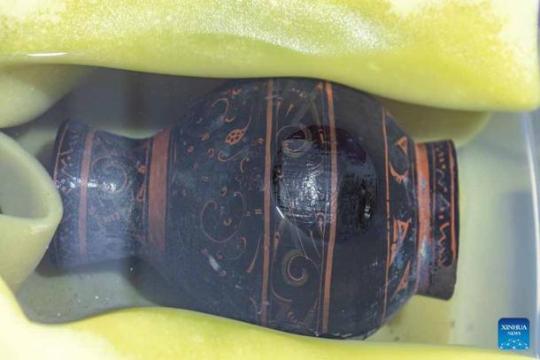

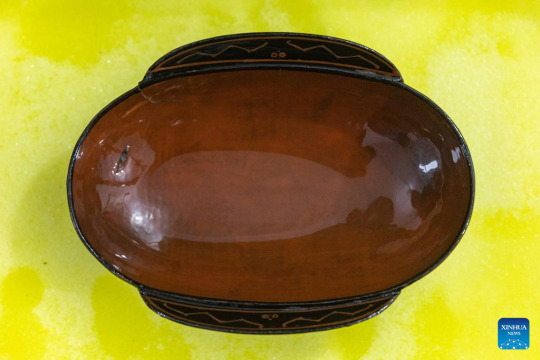

#A Rare Western Han Dynasty Tomb Found in Southwest China#Tomb Holding Hundreds of Ancient Relics Unearthed in China#Western Han Dynasty#ancient tomb#ancient grave#grave goods#ancient artifacts#archeology#archeolgst#history#history news#ancient history#ancient culture#ancient civilizations#ancient china#chinese history#chinese art
62 notes
·
View notes
Text
"Scholars often dismiss physique references to ancient Greece as a mere ruse or rhetorical framework--a "classical alibi" or "discourse of validation"--to avoid censorship. But an examination of the lives of the founders, contributors, and members of the [physique studio and pictorial] Grecian Guild [1955-1968] tells a different story. The Grecian Guild was instrumental in helping a community of men struggling to find a discourse to explain and valorize their sense of themselves, particularly men outside of urban gay enclaves. Benson and Bullock [the founders of the Grecian Guild] took a discourse about ancient Greece that gay men had been using for nearly a hundred years and gave it mass distribution. They used it like gay men used reference to "the Greeks" or Mary Renault novels--as a way to signal their homosexuality. It was a rallying cry that brought in customers and helped them imagine a better world. As historian and biographer Benjamin Wise argues about the way Alexander Percy used the language of Hellenism, it was "a way of speaking out and covering up at the same time."
Invoking classical traditions in order to make an argument for gay rights has been largely forgotten in the twenty-first century, as such a line of argumentation has become politically and historiographically problematic. Indeed, much of modern LGBT historical scholarship and queer theory has asserted that a homosexual identity is a creation of a modern, capitalist world--that homosexual behavior in ancient cultures was understood in very different terms from the way it is today. Invoking classical antiquity also smacks of a Western bias that privileges European ancestry over other cultural and historical influences. Such arguments also raise the specter of pederasty and pedophilia--or at least age-discordant relationships--that play into the hands of gay rights opponents who relentlessly use the argument that gays recruit children to fight gay rights measures...
Despite these changes in cultural understandings and sensibilities, the use of the classical Greek trope to name gay organizations, periodicals, and commercial ventures continued for decades, even when the need for an alibi had eroded if not disappeared. The lambda or lowercase Greek "L" became one of the primary symbols of the 1970s gay liberation movement. During this same period Seattle's largest gay organization was the Dorian Group, and a Jacksonville, Florida-based gay magazine called itself David--a reference to Michelangelo's Renaissance statue--an indirect link to the classical tradition. Like the Grecian Guild, David offered membership in a fraternal organization with features such as a book club, a travel service, conventions, and even legal aid. As an online website, it continues to serve as one of Atlanta's premier LGBT news and entertainment sources.
...
While severely limited by the forces of censorship, the desire to create opportunities for customers to correspond, meet, and get acquainted attests to the palpable wish of gay men to connect with each other during this period. If few members attended a Grecian Guild convention, the possibility of doing so resonated widely. As a teenage Grecian Guild subscriber in Pawtucket, Rhode Island, Michael Denneny read the articles so carefully that he underlined the important parts. "That was proto-political organization, the agenda was very clear to me, and I think to everybody else who joined," Denneny remembered..."These magazines were really important to me," Denneny recalled. "They brought this whole possible world into being, which I'm not sure I could have visualized otherwise."
David K. Johnson, Buying Gay: How Physique Entrepreneurs Sparked a Movement
#queer history#thinking about aang and zuko's connection to the deep past#aang's strange displacement from his people and history#that means he has this distinct lived connection to a by-gone civilization and idyll#and then zuko's obsession with the air nomads#going to all their temples#and in the natla collecting all the nomad and avatar relics#then later their exploration of the sun warrior past#another ancient civilization whose philosophies they seek to adapt#and how both of these relate to aang and zuko's exploration of their gender and alternatives to contemporary masculinity#these fascinations with lost civilizations bring aang and zuko together too#and even force them to address assumptions about age-differences...#just a lot to unpack#just about how exploring other cultures and history thoroughly dislodges one's construction of reality#and opens up possibility
13 notes
·
View notes
Photo
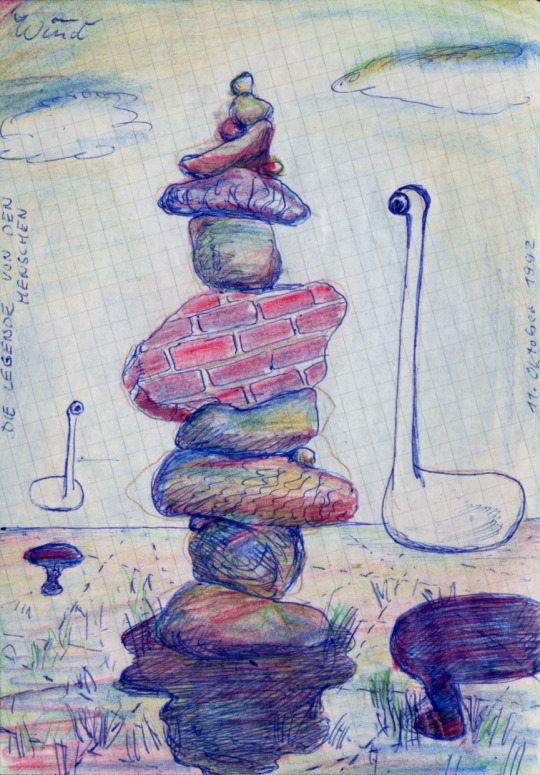
Die Legende von den Menschen, (The Legend of the Mankind), 1992 by J.G.Wind
39 notes
·
View notes
Text

My good friend got me a Quark figurine for my birthday, AND SIGNED BY MOTHERFUCKING ARMIN SHIMERMAN 😭👏🤪🥰🥹🥲 I LOVE MY FRIENDS I LOVE MY FRIENDS I LOVE MY FRIENDS 💖❤️💖🥰
14 notes
·
View notes
Text
Lore Post: God of Knowledge and Wisdom
I did promise we'd get more information about him soon, and here it is. I figured since we're talking about curses, and just read the notes of one of his servants, he should get a bit of a spotlight. So, here comes the overview for the God of Wisdom!
Generally considered the God of Wisdom and Knowledge, Eulas is also known as Kunnzkapp among the Yetis of the Malproksime Frostiĝinta where he rules Magic and mageworkers in addition to his typical domain. Consequently, a common epithet of his is The Archmagis in areas that deal diplomatically or are under the rule of Malproksime Frostiĝinta.
The most commonly worshiped deity of scientists and historians alike, his specific purview creates a unique situation in the Zone. Although few dedicate themselves exclusively to the collection of and maintenance of knowledge, because the act of knowing and learning itself are under his command, he’s one of the more powerful deities in the dimension. Additionally, all professions that require specific knowledge or long years of study see many individuals that venerate or pray to this Divine daily. This means doctors and lawyers, but also many tradespeople and craftspeople in specialized arts like metalworking, glassblowing, and engineering.
His Temples see more curtailed worship than would be expected for so powerful a deity, however, scholars and his servants are fervent in their worship, and even regular simple prayers to remember where you’ve misplaced an object grow his influence. As a result, his Relics and Divine Works are abundant throughout the Local Zone, and take the form of everything from books of rare knowledge to instruments and implements that aid in completing tasks.
Among the most important of his Servants duties is the collection and sequestering of dangerous knowledge. This often, though not exclusively, takes the form of collecting Relics that can manipulate aspects of reality. His most powerful Incarnations have the ability to erase the knowledge of something from existence. This form of sequestration is only done in the most extreme circumstances, as the God loves the proliferation of knowledge as much as the collecting of it, and most of his Incarnations are obsessed with teaching as much as learning. Prominent Servants and Incarnations are themselves Aspects of human concepts as well as pieces of the Divine, so his influence is wide-spread and numerous.
Outside of the various monk/priest castes in every major area of the Local Zone, the greatest collection of his worshipers is at the Universitato de Sorĉado found in Malproksime Frostiĝinta. Indeed, the highest proportion of worshipers is found in that territory in general, as the Yetis dedicate themselves to the pursuit of knowledge and scientific advancement.
#Danny Phantom#Lore#ghost zone lore#ghost zone culture#ghost zone religion#Balshumet's Lore#Balshumet's Baragouin#Danny Phantom Fanfiction#Balshumet's Fanfiction#God of Knowledge#God of Wisdom#God of Magic#You've already met one of his servants#If you've read Passion#They all have gold or bronze eyes#He's one of the more materially active Divine#But in the “I can't stop making Relics and leaving them places” way
7 notes
·
View notes
Photo

always want more chance to have Casual Intimacy Moments with romances in bioware games,,,
#dragon age#dai#solas#inquisitor lavellan#they/them lavellan#solavellan#did a paint version of this. learned things. couldn't post XD#so i lined it and made just a quick warm vibe bc........... yes#tevrael lavellan is an absolute nerd/cultural/history/magic buff and always wants to learn more so#solas + lavellan post (and pre) intimacy doing research and studying and discussing all manner of things is SO canon heh#also i just like Magical Pipes so. shhhhhhhh. lavellan found some Ancient Relic Of Arlathan/Post Fall Elvhen Culture and repaired/remade it#spicy herbs shhhhhhh its fine just magical.... somethin.................
120 notes
·
View notes
Text
Just leaving this here.
Feel free to reblog.
It’s a month or two late but still.
#dougie rambles#news#iraq#middle east#mesopotamia#assyria#bethnahrin#assyrian#assyrians#Assyrian history#history#ancient history#archaeology#relics#restoration#preservation#cultural heritage#monuments#nineveh#Assyrian people#indigenous#indigenous history#indigenous heritage#feel free to reblog#assyriology
7 notes
·
View notes
Text

One of the most famous mummies found in the Tarim Basin is the Princess of Xiaohe, also known as the Beauty of Xiaohe. Named for the cemetery where her body was found, she is remarkably well-preserved even down to her eyelashes.
PHOTOGRAPH BY WENYING LI, XINJIANG INSTITUTE OF CULTURAL RELICS AND ARCHAEOLOGY
#wenying li#xinjiang institute of cultural relics and archaeology#history#mummy#tarim basin#princess of xiaohe#beauty of xiaohe#national geographic
8 notes
·
View notes
Photo




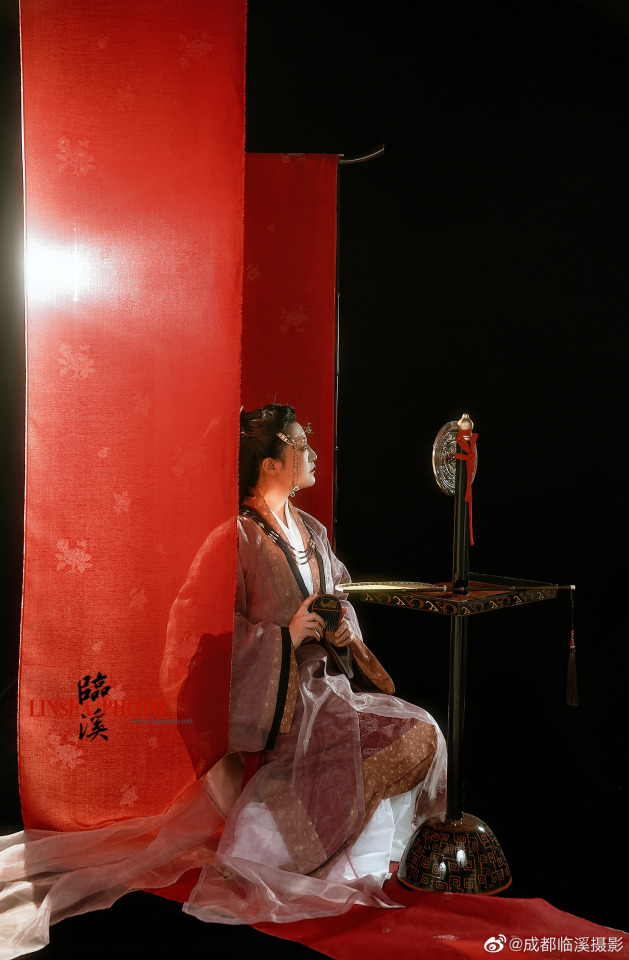
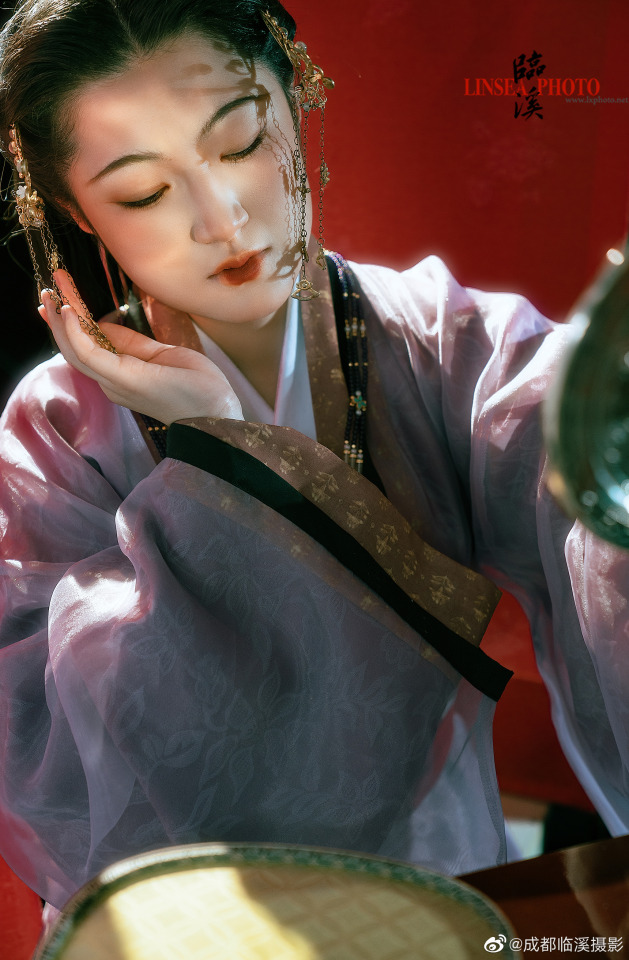



【Han Dynasty Artifact Reference】
China Western Han Dynasty Painted Female Figurines (early and middle period of Western Han)
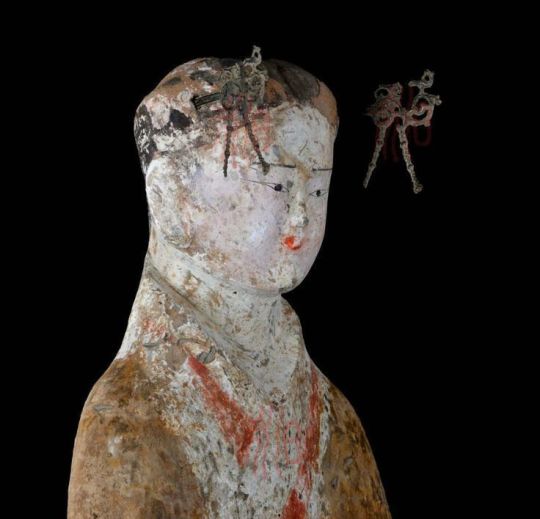

・Plain yarn garment (straight) Mawangdui No. 1 Han Tomb (Xinzhui)
material: silk,size: dress length 132 cm, sleeve length 181.5 cm
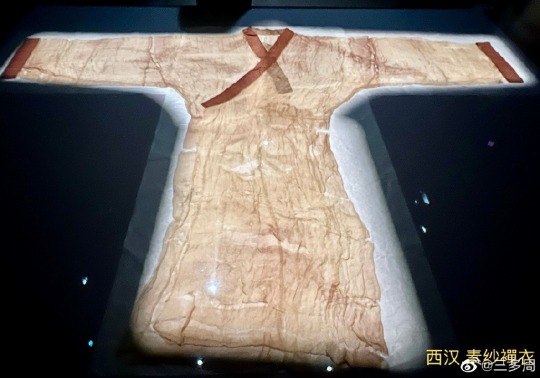
[Hanfu · 漢服]Chinese Han Dynasty Traditional Clothing Hanfu Photoshoot【风露霓裳】
_______
📝 Plan: 成都临溪摄影
📸Photo: 何力
💄Stylist: 百丽 熊熊
🧚🏻 Model: 弋歌
🔗Weibo:https://weibo.com/1648616372/N3L7fw0hT
_______
#chinese hanfu#Han Dynasty#western han dynasty#chinese history#hanfu art#hanfu#chinese traditional clothing#chinese#chinese coustume#chinese relics#hanfu accessories#chinese culture#China History#hanfu photoshoot#chinese historical fashion#漢服#汉服#成都临溪摄影#何力#百丽 熊熊#弋歌#风露霓裳
263 notes
·
View notes
Text
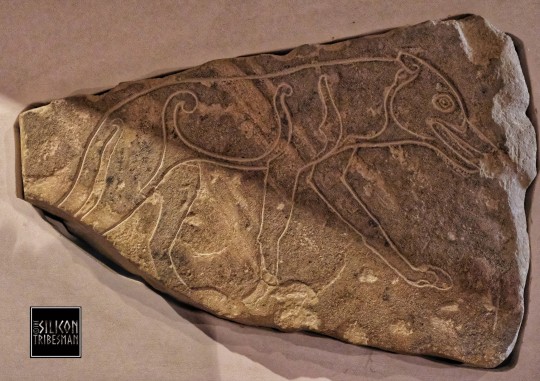


Inscribed Pictish Wolf Symbol Stone, Inverness Museum and Gallery, Inverness, Scotland
#Pictish#pict#pictish art#pictish beast#pictish design#pictish stones#pictish symbols#archaeology#Inverness#Scotland#wolf#beast#relic#artefact#ancient cultures#ancient craft#ancient living
442 notes
·
View notes
Text

Grave Robber Looted 2,400-Year-Old Tomb in China — But Left Treasures Behind
In a cemetery in central China, a grave robber started to dig. The thief tunneled into an ancient tomb, stole some artifacts and vanished. The robbery, however, was only partially successful.
When archaeologists excavated the looted tomb, they realized the robber had left some rare treasures behind.
The Taosi Relic Site and Cemetery is a massive ancient cemetery in Shanxi Province that may have as many as 10,000 tombs, according to a 2018 news release from China Archaeology Network. Excavations of the cemetery have been ongoing for years, but archaeologists have only explored a fraction of the site.
During these excavations, archaeologists uncovered a 2,400-year-old tomb that had been looted by a grave robber, according to a Jan. 21 news release from CCTV News via the Institute of Archaeology at the Chinese Academy of Social Sciences and the China Archaeology Network.




The robber had entered the tomb in 2016 through a hole in one corner, the institute said. The thief stole artifacts from this corner but left most of the grave undisturbed.
Archaeologists unearthed a large number of high-quality artifacts from the 2,400-year-old tomb. They found a set of 16 chimes engraved with sayings, weapons and jade artifacts.
A photo shows some of the ancient musical instruments found in the tomb.
The tomb also contained a bronze drum base, archaeologists said. The base has a hollow shape where a drum would be inserted. Measuring about 33 inches across, the newly found base is among the largest of these types of artifacts ever found in China.
Based on the artifacts found in the 2,400-year-old tomb, archaeologists believe the tomb belongs to a high-ranking aristocrat with significant power.
Officials recovered some bronze artifacts stolen from the Taosi Cemetery in 2022, the institute said.
Taosi Relic Site and Cemetery is in Shanxi Province and about 250 miles southwest of Beijing.
By Aspen Pflughoeft.


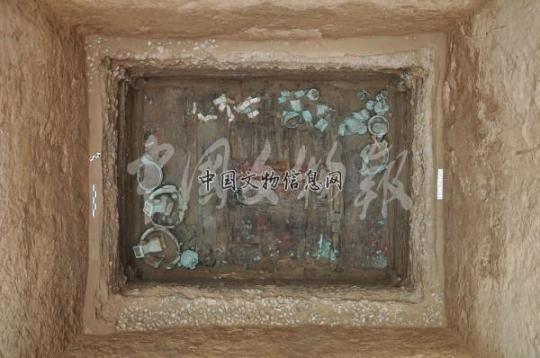
#Grave Robber Looted 2400-Year-Old Tomb in China — But Left Treasures Behind#The Taosi Relic Site and Cemetery#Shanxi Province#ancient grave#ancient tomb#ancient artifacts#archeology#archeolgst#history#history news#ancient history#ancient culture#ancient civilizations#ancient china#chinese history#chinese art
32 notes
·
View notes
Text
I hope Sotheby's returns them.
12 Jan 2023.
#māori#new zealand#aotearoa#the land of the long white cloud#sotheby's#social issues#indigenous people#indigeneous#relics#cultural#treasure#taonga#the guardian
35 notes
·
View notes
Text

i showed this to latimer (very high) and they laughed at it and said "he would!!!"
and then a few moments of silence later they laughed again and said "WAIT NO HE WOULDNT THATS LIKE HIS WHOLE THING"
#this is apparently 'vash trigun shoots light deathnote' i dont know why this exists but its so funny#it feels like a relic of like 2007 anime internet culture. like someone put this on their myspace for sure
23 notes
·
View notes
Text

This painting is for sale ! Check it out using the link above !
#archangels#art#painting#acrylic paint#orfinart#acrylic#orange#beautiful#archangel#angel#angelic#relics series#culture#handcrafted#aesthetic#helping
19 notes
·
View notes